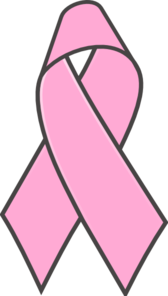| Previous
Page |
PCLinuxOS
Magazine |
PCLinuxOS |
Article List |
Disclaimer |
Next Page |
October Is Breast Cancer Awareness Month |
|
by Meemaw I am one very lucky lady. When I started reading the facts on breast cancer, and thinking about all the people I know who have been stricken with this terrible disease, I decided that I was blessed because I have never had to battle it. An average of 122 per 100,000 women in the US will develop breast cancer, and worldwide, the number varies from 18 to 95 per 100,000 depending on country. Of the 122 US women who develop cancer, 23 may die from it. Let's be clear, though: breast cancer can strike men as well. I read an estimate that in 2014 there would be 2,360 new cases of breast cancer and 430 breast cancer deaths in men in the US. While that looks really small (1.3 new cases per 100,000 and 0.3 per 100,000 deaths), it is still a significant number of men who will have to fight. This is such a devastating disease, I think that even one case is too many.  I started looking at some of the facts, and found this list at the Susan G Komen site of Kansas City, MO, USA. Breast Cancer Fast Facts
Cancer treatment varies from person to person, just like treatment for other conditions. The most common are chemotherapy, radiation and surgery. All of those have been used by friends of mine. Many treatments are a combination of those I just mentioned, along with supplementary treatments like pain management, dietary changes, stress management and counseling. One of the most recent developments in combating breast cancer is using the patient's own immune system to combat the cancer cells. There are at least eight different studies currently going on in just the United States that are looking to leverage the immune system in combating the cancerous growths, by way of vaccines. While breast cancer has not been typically viewed as an "immunogenic cancer" (a cancer that can be fought by the body's immune system), recent advances suggest that the body's own immune system can be used to fight the cancer cells. It does this largely by exploiting the differences between cancer cells and the body's healthy cells, giving the immune system something to target. In a way, it's as if the body is using those differences to paint a target on the cancer cells, so that the immune system can zero in on them, and eliminate them. One research facility has developed a vaccine that fights a protein found in 80% of breast tumors. It is presently in the testing phase. Although the studies are in early stages, they are showing promise, and they are giving oncologists new strategies for fighting breast cancer. Although technical in nature, you can read more about the ongoing research here. According to the American Cancer Society, more than half of all cancer deaths could be prevented by making healthy choices like not smoking, staying at a healthy weight, eating right, keeping active, and getting the recommended screening tests. I am trying to do all of that to lessen my chances, now that I'm older. Find out more information at any of these sites (or Google to find more sites):
http://ww5.komen.org/ |




